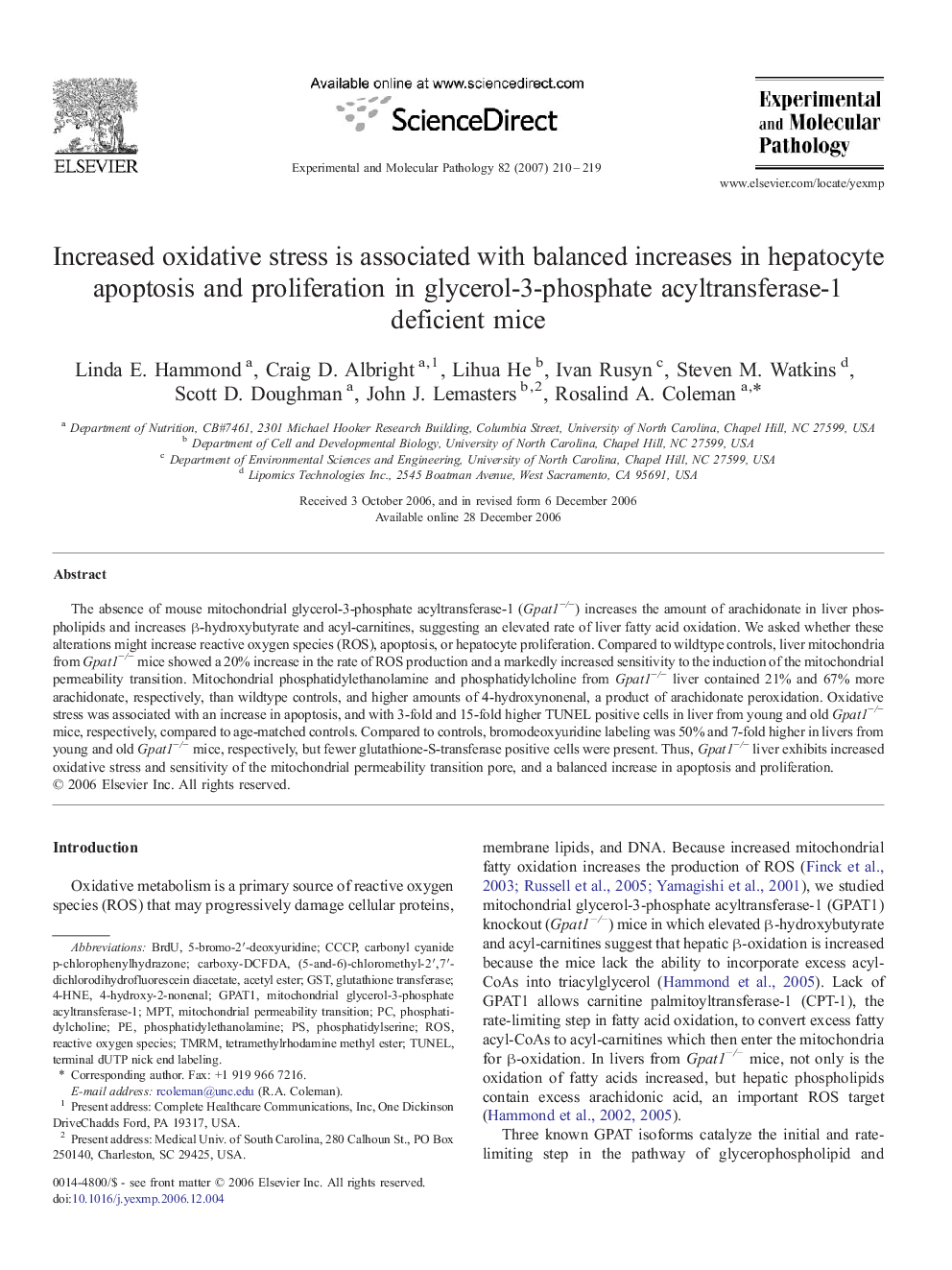| Article ID | Journal | Published Year | Pages | File Type |
|---|---|---|---|---|
| 2775969 | Experimental and Molecular Pathology | 2007 | 10 Pages |
The absence of mouse mitochondrial glycerol-3-phosphate acyltransferase-1 (Gpat1−/−) increases the amount of arachidonate in liver phospholipids and increases β-hydroxybutyrate and acyl-carnitines, suggesting an elevated rate of liver fatty acid oxidation. We asked whether these alterations might increase reactive oxygen species (ROS), apoptosis, or hepatocyte proliferation. Compared to wildtype controls, liver mitochondria from Gpat1−/− mice showed a 20% increase in the rate of ROS production and a markedly increased sensitivity to the induction of the mitochondrial permeability transition. Mitochondrial phosphatidylethanolamine and phosphatidylcholine from Gpat1−/− liver contained 21% and 67% more arachidonate, respectively, than wildtype controls, and higher amounts of 4-hydroxynonenal, a product of arachidonate peroxidation. Oxidative stress was associated with an increase in apoptosis, and with 3-fold and 15-fold higher TUNEL positive cells in liver from young and old Gpat1−/− mice, respectively, compared to age-matched controls. Compared to controls, bromodeoxyuridine labeling was 50% and 7-fold higher in livers from young and old Gpat1−/− mice, respectively, but fewer glutathione-S-transferase positive cells were present. Thus, Gpat1−/− liver exhibits increased oxidative stress and sensitivity of the mitochondrial permeability transition pore, and a balanced increase in apoptosis and proliferation.
